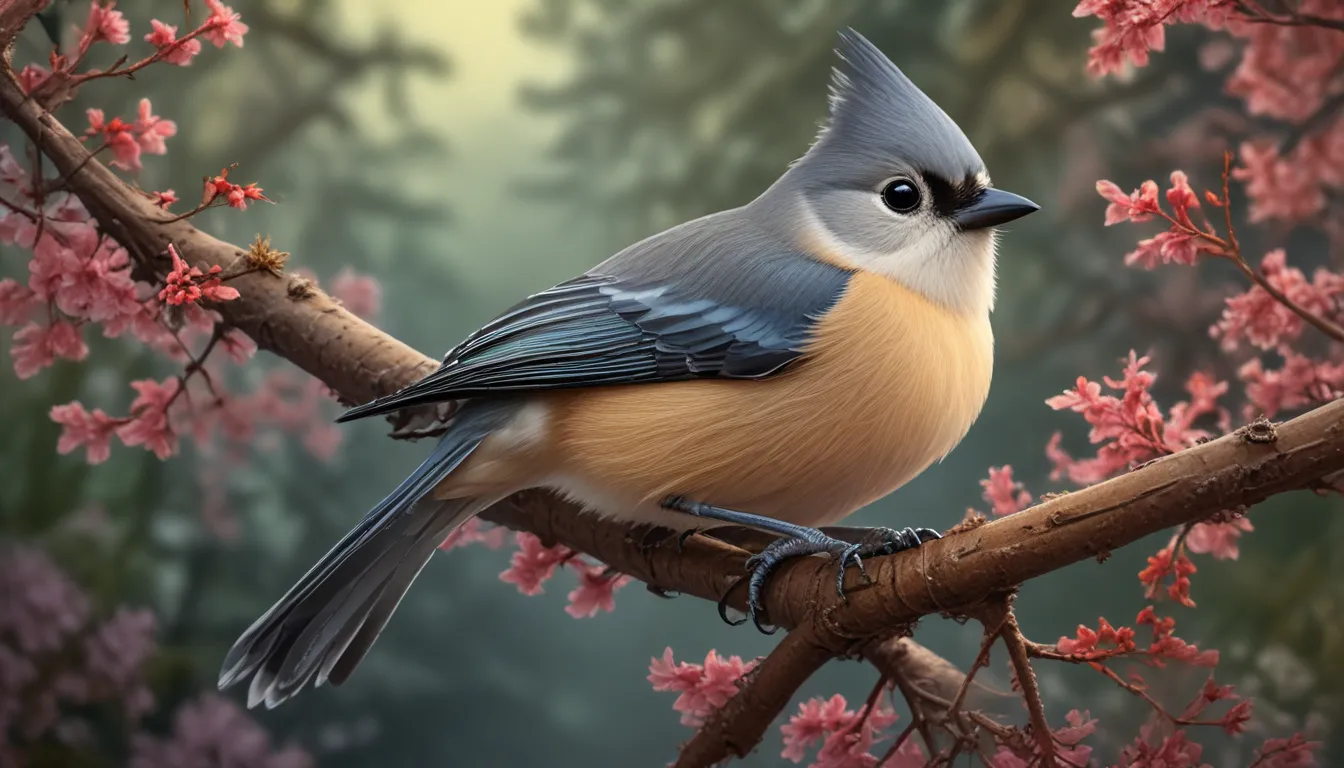The pictures we use in our articles might not show exactly what the words say. We choose these pictures to make you interested in reading more. The pictures work together with the words but don’t take their place. The words still tell you the important facts.
Welcome to the charming world of titmice, small birds known for their playful nature and unique behaviors. Titmice belong to the family Paridae and can be found all over the world, enchanting observers with their delightful antics. In this article, we will delve into the lives of titmice and uncover 17 intriguing facts about these feathered wonders. From their acrobatic feeding habits to their melodious calls, there is much to learn and appreciate about these tiny yet remarkable birds. So, let's embark on this journey together and discover the enchanting world of titmice!
The Delightful Titmouse Species
There are several species of titmice, with the Tufted Titmouse and the Black-crested Titmouse being among the most common. These small, social birds with playful personalities and acrobatic feeding habits are a delightful sight in woodlands and suburban areas.
Size, Appearance, and Crest
Measuring around 5-6 inches in length, titmice have a rounded body, short neck, and long tail. Their most striking feature is the crest on their heads, which can be raised or lowered depending on their mood, adding to their charming appearance.
Playful and Curious Personalities
Titmice are known for their playful and curious behavior. They can often be seen exploring their surroundings, hanging upside down from branches, and displaying a keen interest in human activity. Their inquisitive nature adds to their endearing charm.
Acrobatic Feeding Habits and Diverse Diet
Titmice exhibit acrobatic feeding habits, clinging to tree branches or hanging upside down while foraging for insects, seeds, berries, and nuts. They are highly adaptable and readily visit bird feeders, especially during colder months when food sources are scarce.
Melodious Vocalizations
With a repertoire of calls and songs, titmice communicate through vocalizations, including their distinctive "peter-peter-peter" call. These melodious sounds serve as a means of communication and territory establishment among titmice.
Nesting Behavior and Social Interactions
Titmice build their nests in tree cavities or nest boxes, using grasses, moss, and soft materials for construction. They are social birds often seen in small flocks, engaging in cooperative foraging and working together to find food.
Monogamous Mates and Territorial Defense
Forming monogamous pairs and mating for life, titmice engage in courtship displays involving calls, songs, and aerial chases. They are territorial birds that vigorously defend their nesting areas against intruders to protect their nests and young.
Year-round Residents and Habitat
Titmice are typically non-migratory birds, residing in their range throughout the year. They can be found in various habitats, including woodlands, gardens, parks, and suburban areas, adapting to different environments with ease.
Longevity and Predation
With an average lifespan of 2-3 years in the wild, titmice face predation from cats, snakes, hawks, and owls. Employing protective strategies such as remaining hidden or mobbing threatening predators, titmice demonstrate resilience in the face of danger.
Caching Behavior and Nest Box Acceptance
During winter months, titmice store food in hidden locations, relying on their impressive memory to retrieve it when needed. They readily accept nest boxes placed in suitable locations, providing a safe and cozy environment for raising their young.
Conservation Status and Habitat Preservation
While titmice populations are generally stable and not considered threatened, habitat loss and nesting site destruction can negatively impact their numbers. Conservation efforts focused on preserving their habitats are essential for ensuring the continued well-being of these delightful birds.
Titmice, with their playful nature, acrobatic skills, and melodious calls, bring joy and charm to our natural surroundings. Observing these lively birds in action can be a delightful experience, reminding us of the beauty and wonder of the avian world. By creating inviting habitats for titmice through bird feeders and nesting boxes, we can cultivate a welcoming environment for these charismatic creatures in our own backyards.
In Appreciation of Nature’s Delights
As you admire a titmouse perched gracefully on a branch or listen to its cheerful song echoing through the trees, take a moment to appreciate the wonders of the natural world. Titmice, with their endearing behaviors and captivating presence, serve as a reminder of the joy and beauty that surrounds us each day. Embrace the opportunity to connect with nature through the enchanting company of these delightful avian wonders.
Frequently Asked Questions:
- What do titmice eat?
-
Titmice have a varied diet consisting of insects, seeds, nuts, fruits, and berries. They are also known to visit bird feeders for sunflower seeds, suet, and other bird food.
-
How do titmice communicate?
-
Titmice communicate through a series of calls, including their signature "peter-peter-peter" song. Vocalizations play a crucial role in warning of predators and establishing territorial boundaries.
-
Do titmice migrate?
-
Most titmice species are non-migratory, remaining in the same area throughout the year. However, some northern populations may undertake seasonal migrations in search of food during harsh winter conditions.
-
Are titmice social birds?
-
Yes, titmice are highly social birds and often form small flocks outside the breeding season. Their cooperative behaviors, such as mobbing predators and alerting each other to potential dangers, illustrate their strong social connections.
-
How can I attract titmice to my backyard?
- To attract titmice to your backyard, provide a variety of food sources through bird feeders stocked with seeds, nuts, and suet. Planting native trees and shrubs can offer natural food options, while providing suitable nesting boxes can encourage titmice to make your backyard their home.
As you explore the fascinating world of titmice, remember to cherish the moments spent in the company of these delightful creatures. Their playful antics, acrobatic skills, and melodious calls serve as a testament to the beauty and resilience of nature. By creating a welcoming environment for titmice in your own backyard, you can witness firsthand the magic of these captivating birds as they brighten your days with their presence. Enjoy the wonders of the avian world and embrace the joy that titmice bring to your natural surroundings!






